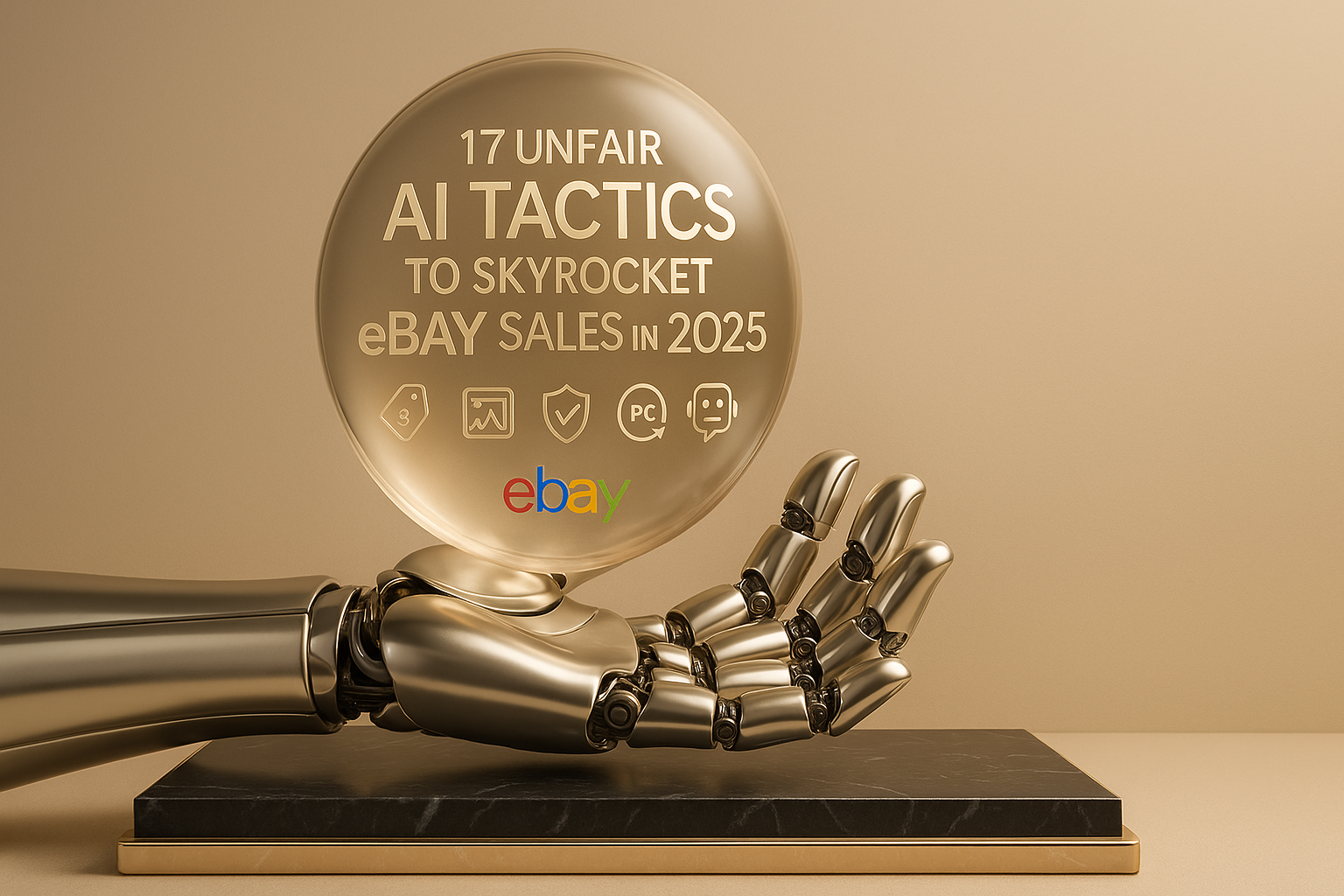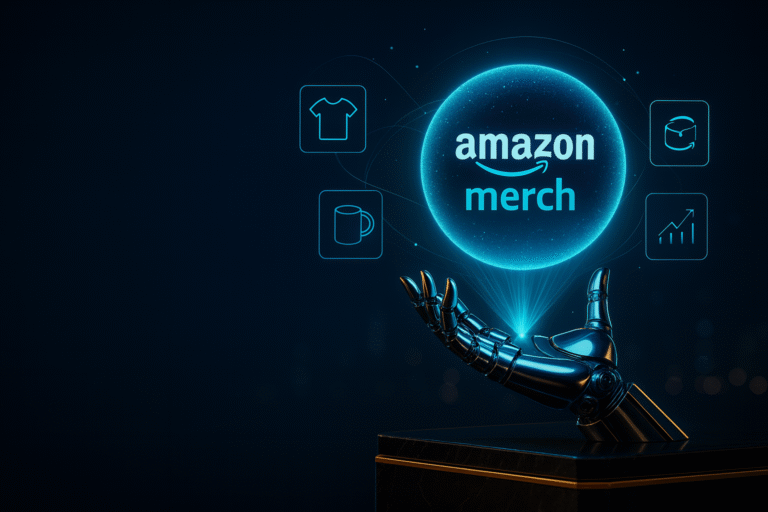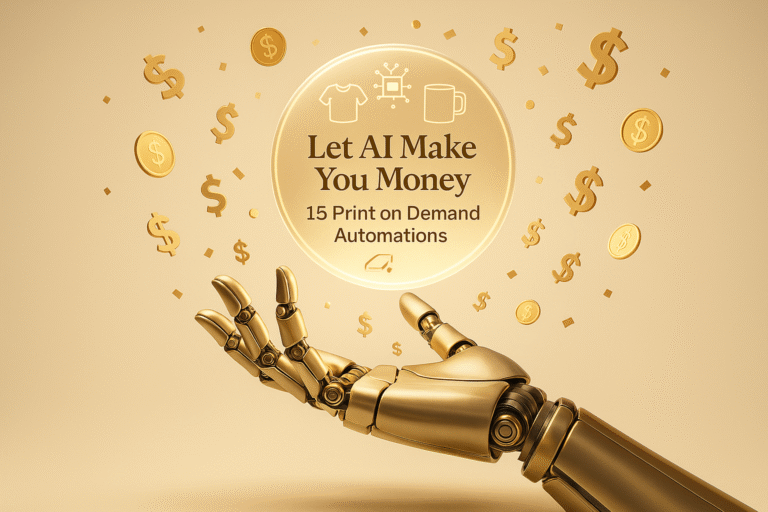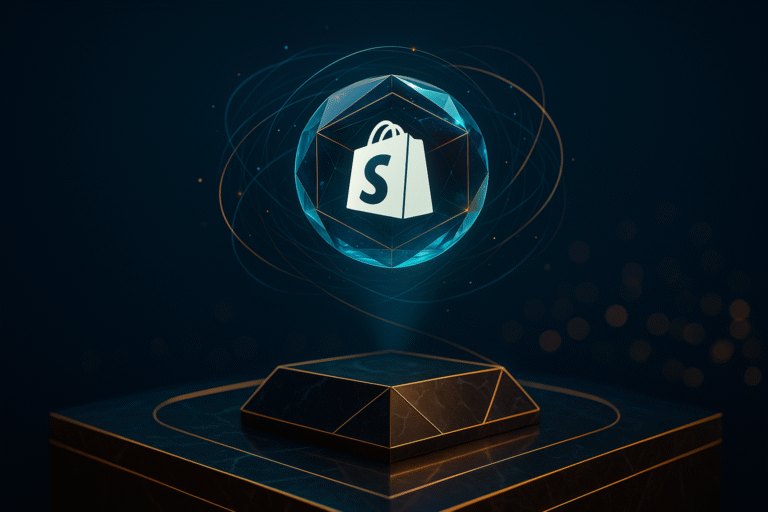Sarah, a part-time eBay seller, used to spend her entire Sunday afternoons creating just five product listings. Fast-forward six months after discovering eBay AI tools, and she’s now creating 50+ optimized listings in the same timeframe while her sales have tripled. What changed everything for Sarah wasn’t magic—it was strategically leveraging artificial intelligence to automate, optimize, and accelerate her eBay business.
If you’re still manually crafting every listing, responding to each customer message individually, and guessing at competitive pricing, you’re essentially bringing a horse and buggy to a Formula 1 race. The eBay AI revolution is here, and sellers who master these 17 tactics are already leaving their competition in the dust.

1. Master eBay’s Native Magical Listing Tool
eBay’s game-changing Magical Listing Tool represents the future of e-commerce automation. Simply snap a photo of your product, and this eBay AI powerhouse generates complete listings with optimized titles, detailed descriptions, and accurate categorization. The technology leverages computer vision and natural language processing to identify products and create seller-ready content.
The results speak volumes: over 200 million listings have been created using this tool, with a staggering 95% adoption rate among sellers who try it. Users report an 80% reduction in listing time and significantly improved search visibility. The AI doesn’t just save time—it actually creates better listings than many sellers could produce manually.
Here’s the insider secret: while the tool is incredibly powerful, always review and customize the generated content. Add your personal touch, verify all specifications, and ensure the description matches your item’s exact condition. The AI provides an excellent foundation, but your expertise makes the listing shine.
2. Dominate Search with AI-Powered Title Optimization
Your listing title is prime real estate in eBay’s search algorithm, and eBay AI tools can transform mediocre titles into conversion magnets. Tools like 3Dsellers Title Builder and ZIK Analytics analyze millions of successful listings to identify high-performing keyword combinations.
Smart sellers understand that eBay’s Cassini algorithm rewards relevance over keyword stuffing. The AI revolution has shifted the focus from cramming keywords to creating titles that both algorithms and humans find compelling. Modern title optimization involves understanding search intent, seasonal trends, and buyer psychology.
Consider this transformation: “Used iPhone Case” becomes “iPhone 14 Pro Clear Protective Case Shockproof Anti-Drop Cover with Camera Protection.” The AI-optimized version captures specific model searches, highlights key features, and uses language that converts browsers into buyers.
• Use all 80 characters strategically, prioritizing important keywords at the beginning • Include specific model numbers, brands, and key features • Avoid promotional language like “WOW” or “AMAZING DEAL” • Research competitor titles using AI analytics tools • Test different variations and monitor performance metrics
3. Create Compelling Content with Automated Description Generation
Writing product descriptions that convert requires balancing information with persuasion—a perfect job for AI assistance. ChatGPT and similar tools can generate detailed, engaging descriptions when provided with the right prompts. The key lies in crafting prompts that produce eBay-optimized content rather than generic marketing copy.
Professional eBay sellers are using prompts like: “Create an eBay product description for [specific item] targeting [buyer demographic] emphasizing [key benefits] with a conversational, trustworthy tone.” This approach generates descriptions that feel personal while including all necessary technical details.
The magic happens when you combine AI efficiency with human oversight. Review every generated description for accuracy, add personal touches that reflect your brand voice, and ensure all claims can be substantiated. Smart sellers also use AI to generate multiple description variations for A/B testing.
4. Transform Photos with AI-Enhanced Product Photography
Visual presentation can make or break an eBay listing, and AI-powered photo enhancement tools have democratized professional-quality product photography. eBay’s native background removal and enhancement features automatically create clean, consistent product images that increase conversion rates by 25-40%.
Beyond eBay’s built-in tools, third-party solutions like PhotoRoom and Remove.bg can transform smartphone photos into professional-looking product shots. These tools remove distracting backgrounds, enhance lighting, and create the consistent visual branding that builds buyer confidence.
The transformation is remarkable: cluttered kitchen counter photos become clean, professional product shots with crisp white backgrounds. This visual consistency signals professionalism and builds trust with potential buyers who might otherwise scroll past amateur-looking listings.
• Remove distracting backgrounds using AI-powered tools • Enhance lighting and color consistency across all product photos • Create mobile-optimized images that load quickly • Maintain consistent visual branding across your listings • Use multiple angles and detail shots to reduce return rates
5. Gain Competitive Intelligence with AI-Powered Market Analysis
Knowledge is power in the eBay marketplace, and AI-driven competitive analysis tools provide insights that were previously impossible to obtain manually. ZIK Analytics processes millions of data points to reveal market trends, competitor strategies, and profit opportunities that human analysis would miss.
These sophisticated tools track competitor pricing changes, monitor inventory levels, analyze seasonal demand patterns, and identify emerging market opportunities. Successful sellers use this intelligence to make data-driven decisions about product selection, pricing strategies, and inventory management.
The competitive advantage becomes clear when you can identify trending products before they become oversaturated, spot pricing opportunities in real-time, and understand exactly why certain listings outperform others. This isn’t guesswork—it’s strategic market intelligence powered by artificial intelligence.
6. Maximize Profits with Dynamic AI Repricing
Static pricing is a relic of the pre-AI era. Modern eBay sellers leverage dynamic repricing tools like StreetPricer to automatically adjust prices based on market conditions, competitor actions, and demand fluctuations. This isn’t about racing to the bottom—it’s about intelligent pricing optimization.
AI repricing algorithms analyze hundreds of variables including competitor inventory levels, seasonal demand patterns, shipping costs, and market velocity to determine optimal pricing strategies. The most sophisticated systems can differentiate between unique items and commoditized products, applying different pricing logic accordingly.
The results are impressive: sellers using AI repricing report increased profit margins, faster inventory turnover, and reduced manual workload. The key insight is that 49.3% of AI-driven reprices are actually upward price movements, proving that smart algorithms find opportunities to increase rather than decrease prices.
• Set intelligent minimum and maximum price boundaries • Monitor competitor stock levels and pricing patterns • Adjust pricing frequency based on product categories • Use velocity-based pricing for unique or rare items • Track performance metrics to optimize algorithm settings
7. Predict Market Trends with AI Forecasting
Imagine knowing which products will be in high demand 60-90 days before your competitors catch on. AI-powered trend analysis tools make this possible by analyzing social media mentions, search volume trends, seasonal patterns, and market indicators to predict future demand spikes.
Tools like Trend Riot Insights process millions of data points from multiple sources to identify emerging trends in their early stages. This predictive capability allows forward-thinking sellers to build inventory, optimize listings, and position themselves ahead of market movements.
The strategic advantage is enormous. While other sellers scramble to meet unexpected demand or get stuck with dead inventory, AI-informed sellers are already positioned with the right products at the right time. This proactive approach can increase revenue by 30-50% compared to reactive strategies.
8. Understand Your Customers with AI Behavior Analysis
eBay’s vast data ecosystem contains invaluable insights about customer behavior, purchasing patterns, and preferences. Smart sellers use AI tools to analyze this data and uncover opportunities for personalization, cross-selling, and customer lifetime value optimization.
AI-powered customer analysis reveals insights like optimal listing timing, seasonal buying patterns, price sensitivity thresholds, and demographic preferences. This intelligence enables sellers to tailor their strategies for maximum effectiveness rather than using one-size-fits-all approaches.
The personalization possibilities are endless. Understanding that certain customers prefer detailed technical specifications while others respond to emotional appeals allows sellers to create targeted marketing messages and listing variations that resonate with specific buyer segments.
9. Automate Customer Service with AI Messaging
Customer service can consume countless hours, but AI automation tools are revolutionizing how eBay sellers handle buyer communications. eBay’s native AI Assistant for Messaging, launched in August 2025, automatically handles routine inquiries about shipping, returns, and product details.
Third-party solutions like eDesk and 3Dsellers provide even more sophisticated automation capabilities, including personalized responses, order status updates, and proactive customer communication. These tools maintain the personal touch while eliminating repetitive manual tasks.
The time savings are substantial—sellers report reducing customer service workload by 60-90% while actually improving response times and customer satisfaction. The AI handles routine questions instantly, freeing sellers to focus on complex issues that require human judgment.
• Configure automated responses for common questions • Set up proactive order status and shipping notifications • Use AI to personalize message templates based on customer history • Monitor message sentiment and escalate negative interactions • Integrate with inventory systems for real-time product information
10. Conduct Sophisticated Market Research with AI Analytics
Market research used to require expensive consultants or time-consuming manual analysis. Now, AI-powered tools provide institutional-grade market intelligence accessible to individual sellers. These systems analyze millions of transactions to identify profitable product categories, optimal pricing strategies, and market entry opportunities.
The depth of analysis available today is extraordinary. AI tools can identify products with optimal supply-demand ratios, analyze seasonal trends across multiple years, and even predict which items are likely to become obsolete. This intelligence transforms product selection from guesswork into strategic decision-making.
Successful sellers focus on products with a 60% total sales to total supply ratio, indicating healthy demand without oversaturation. This data-driven approach has helped sellers like Nahar Gevas grow from $60-100 monthly profit to $2,500 within just two months using ZIK Analytics insights.
11. Streamline Operations with AI Inventory Management
Inventory management complexity grows exponentially with business scale, but AI-powered systems make it manageable even for large operations. Tools like MySellerHub and SellerActive provide real-time inventory tracking, automated reorder points, and multi-channel synchronization.
These sophisticated systems prevent overselling disasters, optimize warehouse space utilization, and provide predictive analytics for inventory planning. The AI learns from historical data to predict demand patterns and recommend optimal stock levels for each product.
The operational efficiency gains are remarkable. Sellers report cutting inventory management time in half while eliminating stockouts and reducing carrying costs. The AI handles the details while sellers focus on strategic growth initiatives.
12. Amplify Reach with AI Social Media Content
Social media promotion drives significant eBay traffic, but creating engaging content consistently challenges even dedicated sellers. eBay’s AI Social Media Caption Generator, launched in 2025, automatically creates platform-specific posts optimized for engagement and conversion.
This tool analyzes your listings and generates compelling social media content that maintains your brand voice while maximizing algorithmic reach. The AI understands platform-specific best practices and creates content optimized for Facebook, Instagram, Twitter, and other channels.
Early adopters describe the tool as a “game changer” for social media marketing. The automated content generation maintains consistency while freeing sellers to focus on community engagement and relationship building rather than content creation.
13. Integrate Seamlessly with Cross-Platform AI Tools
The most successful eBay sellers don’t operate in isolation—they integrate their operations with broader e-commerce and marketing ecosystems. Tools like ActiveCampaign provide direct eBay integration through Zapier, enabling sophisticated email marketing automation based on purchase behavior.
Advanced sellers use AI-powered tools like Voiceflow to create intelligent chatbots that handle customer inquiries across multiple channels. These integrations create seamless customer experiences while reducing manual workload.
The synergy between different AI tools creates exponential efficiency gains. When your inventory management system talks to your repricing tool, which connects to your customer service automation, the result is a nearly autonomous selling operation that scales effortlessly.
• Connect eBay data to email marketing platforms • Use AI chatbots for cross-channel customer support • Integrate inventory systems with multiple selling platforms • Automate cross-selling and upselling campaigns • Create unified customer databases across all channels
14. Optimize Advertising with AI-Powered Campaigns
eBay’s AI-Powered Advertising Tools, launched in July 2025, represent a quantum leap in campaign optimization sophistication. These systems use semantic targeting and large language models to create campaigns that reach qualified buyers more effectively than traditional keyword-based approaches.
The AI analyzes product listings, identifies relevant customer segments, and creates targeted campaigns that achieve 40% increases in quality traffic and nearly doubled click-through rates. This isn’t just automation—it’s intelligent campaign optimization that learns and improves continuously.
Smart sellers combine eBay’s native advertising AI with external tools for comprehensive campaign management. The key is understanding that AI advertising optimization requires high-quality data inputs and strategic oversight to achieve optimal results.
15. Dominate Search with AI-Enhanced SEO
Search engine optimization for eBay requires understanding both eBay’s internal search algorithm and external search engines like Google. AI tools help sellers identify high-value keywords, optimize listing content, and monitor search performance across multiple platforms.
The SEO landscape has evolved beyond simple keyword matching to include semantic search, user intent analysis, and content quality assessment. AI tools excel at analyzing these complex factors and providing actionable optimization recommendations.
Modern eBay AI SEO focuses on creating content that satisfies both algorithmic requirements and human needs. This means optimizing for voice search queries, featured snippet positioning, and mobile-first indexing while maintaining the conversational tone that converts browsers into buyers.
16. Make Data-Driven Decisions with AI Analytics
The difference between successful and struggling eBay sellers often comes down to decision-making quality. AI analytics platforms provide the insights needed to make intelligent choices about product selection, pricing strategies, inventory management, and marketing investments.
Advanced analytics tools offer over 200 metrics with infinite segmentation possibilities, enabling sellers to understand exactly which strategies drive results. This granular analysis reveals optimization opportunities that would be impossible to identify manually.
The key insight is that AI analytics don’t just report what happened—they predict what’s likely to happen and recommend specific actions to improve outcomes. This predictive capability transforms reactive business management into proactive strategy execution.
17. Future-Proof Your Business with Agentic AI
The future of e-commerce belongs to agentic AI systems that can handle complete workflows autonomously. eBay’s partnership with OpenAI signals the coming integration of conversational commerce and AI-powered shopping assistants that manage entire customer journeys.
Preparing for this future means selecting AI tools with robust API access, focusing on platforms that integrate well with emerging technologies, and building operational flexibility that can adapt to rapid technological changes.
Smart sellers are already positioning themselves for voice commerce integration, AI-powered personalization at scale, and autonomous inventory management systems that will define the next generation of e-commerce operations.
Your eBay AI Journey Starts Now
The transformation from traditional selling to AI-powered e-commerce success doesn’t happen overnight, but it doesn’t require years either. Sellers who start implementing these 17 tactics systematically report significant improvements within 30-60 days.
Begin with eBay’s native AI tools, then gradually integrate third-party solutions like ZIK Analytics for market research, Tidio for customer service automation, and specialized tools from Fiverr’s marketplace for professional services.
The eBay sellers thriving in 2025 aren’t necessarily the most experienced—they’re the ones who embraced eBay AI tools to automate routine tasks, optimize performance, and scale operations efficiently. The question isn’t whether AI will transform eBay selling—it’s whether you’ll be leading the transformation or scrambling to catch up.
Your competition is already using these tools. The only question remaining is: will you join them at the front of the pack, or watch from the sidelines as AI-powered sellers dominate the marketplace?
Ready to transform your selling strategy? Explore these related guides: 21 Irresistible Etsy Product Ideas You Can Create with AI Today, Launch a Profitable Shopify Store with AI: 12 No-Fluff Steps, and Print-on-Demand Breakthroughs: 15 AI Designs That Actually Sell for more AI-powered e-commerce strategies.
eBay AI: Frequently Asked Questions
Is using AI to create eBay listings allowed?
Policy basics
Yes. You can use AI for research, copy, and images provided the listing stays accurate, honest about condition, and policy-compliant.
Best practices
- Review and fact-check every claim
- Match specs and condition precisely
- Remove fluff; keep it buyer-centric
Which eBay AI tools should beginners start with?
Starter stack
- AI listing assistant + title optimizer
- Image enhancer for backgrounds/lighting
- Repricer with min/max guardrails
- Messaging assistant for FAQs
Next steps
Add market research, analytics dashboards, and ad automation as volume grows.
Do AI title optimizers improve search visibility on eBay?
How it helps
AI highlights relevant keywords, model numbers, and attributes buyers actually search for—improving relevance without stuffing.
Implementation tips
- Use the full 80 characters; lead with core terms
- Avoid spammy phrasing
- Test variations and track CTR/conversions
Can AI-generated descriptions cause policy or SEO issues?
Risks
Only if published without review—generic claims, inaccuracies, or condition mismatches can lead to problems.
Fix it
- Human-edit for accuracy and brand voice
- Include precise specs and condition notes
- Remove filler; focus on buyer outcomes
How does AI repricing affect profits—won’t it race to the bottom?
Reality check
Smart repricing is rules-based optimization, not a price war. It reacts to demand and competition—often raising price when the market allows.
Guardrails
- Set clear floor/ceiling prices
- Factor fees, shipping, and margins
- Adjust frequency by category and velocity
Can AI really improve my product photos for eBay?
What improves
Background cleanup, lighting consistency, and framing—making your listings look professional and trustworthy.
Action steps
- Show multiple angles and close-ups
- Use clean, consistent backdrops
- Compress for mobile speed
How can I automate customer service on eBay with AI?
Automation basics
Use templates and AI-assisted replies for shipping, returns, and sizing questions to cut response time dramatically.
Escalation
- Detect negative sentiment and route to a human
- Personalize follow-ups with order data
- Track resolution time and satisfaction
Will AI advertising replace manual campaign management?
Balanced approach
AI can automate targeting and bidding; you still set goals, budgets, and creative direction.
Optimization tips
- Feed high-quality listing data
- Run A/B tests on creatives
- Review search terms and placements weekly
What’s the best way to measure ROI from eBay AI tactics?
Core metrics
- Listing time saved, CTR, conversion rate
- Average selling price and return rate
- Response time/SLA and net margin
Weekly rhythm
Benchmark, test one change, review results, then scale what worked. Small, steady wins compound fastest.




